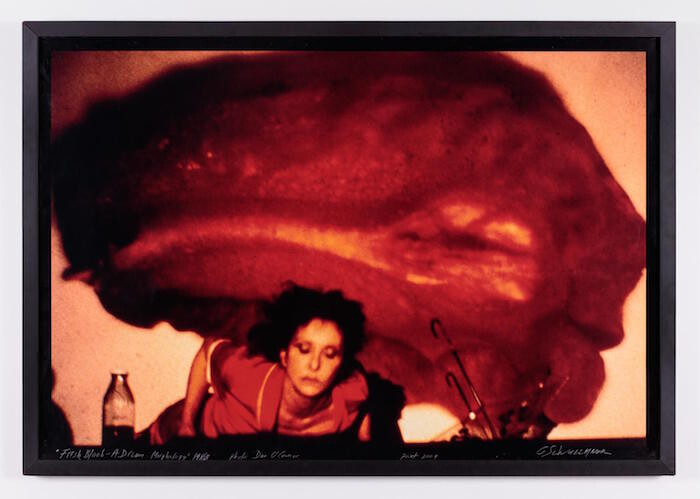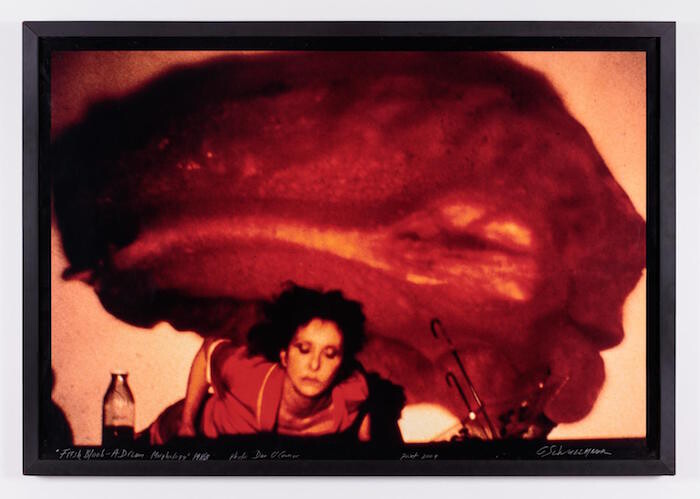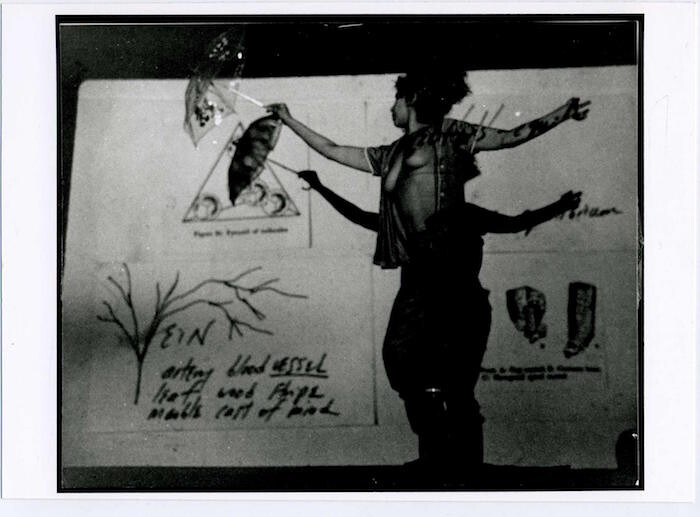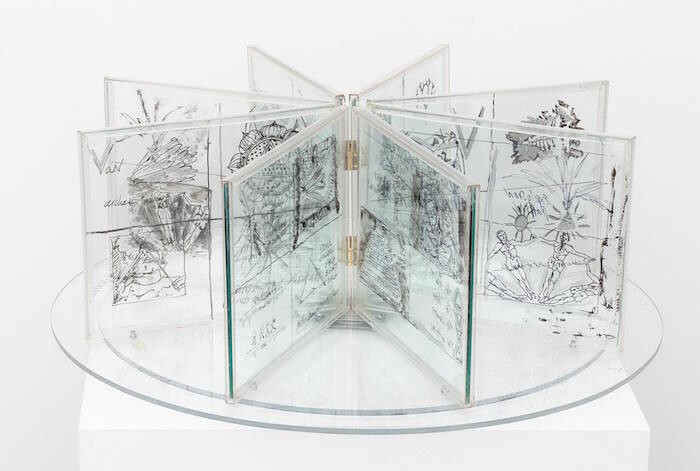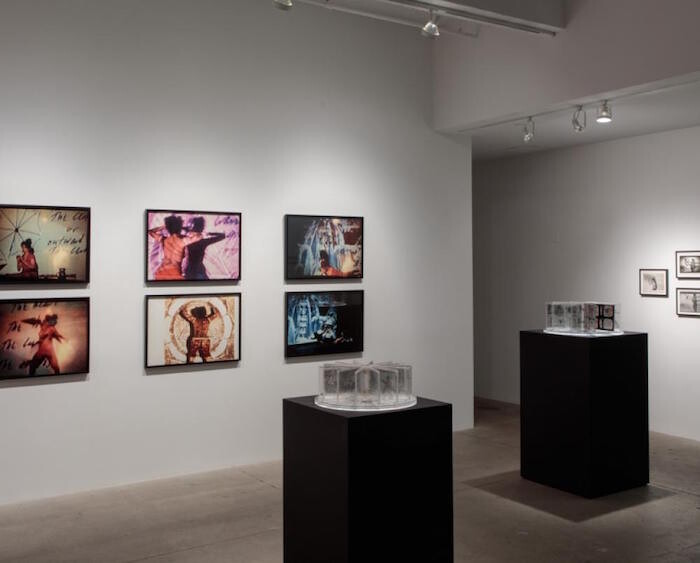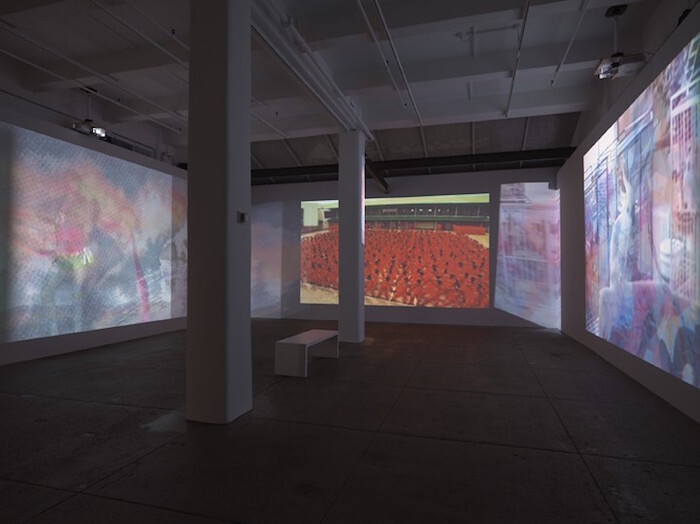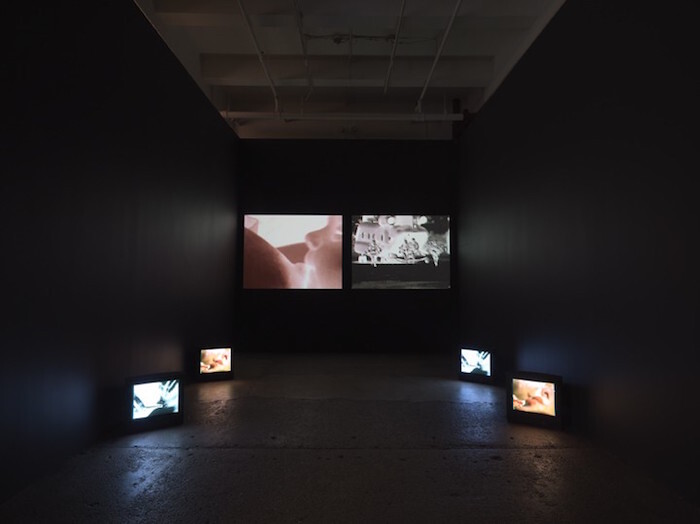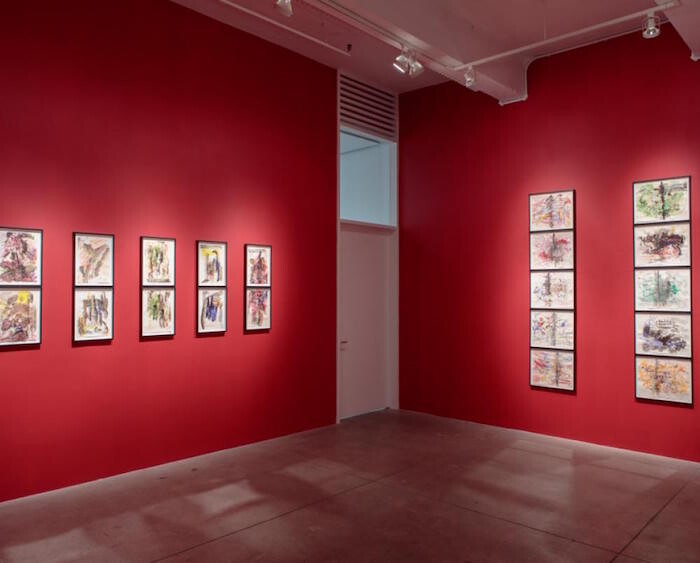Exploded canvases, split screens and multiple channels, mixed-, multi-, and inter-media: Carolee Schneemann has been clear in her rejection of medium specificity in favor of what one might call medium promiscuity. Since the early 1960s, she has consistently incorporated images (both moving and still) into multimedia environments that include elements of performance, painting, sculpture, installation, Happening. This has always made her difficult to categorize and, despite her centrality to the history of the last half-century of American art, easy to marginalize. The intense hybridity of form and medium is, in this sense, partly bound up with her feminism, her explicit engagement with sexuality, and the exploration of her own body through her work.
While her contribution to experimental cinema is fairly well known, her reputation rests almost entirely on the four films she made between the mid-1960s and late 1970s. Relatively little has been written about her practice since then, leaving a lacuna which is only now being filled by a two-part solo exhibition, divided between P•P•O•W Gallery (“Further Evidence – Exhibit A”) and Galerie Lelong (“Further Evidence – Exhibit B”), which focuses on work that the artist made in a number of mediums—video installation, collage, sculpture, performance, drawing, painting—from the early 1980s to the late 2000s.
The exhibition at P•P•O•W houses the earliest pieces in the joint show, and is centered around three major works: Fresh Blood – A Dream Morphology (1981–1987), Venus Vectors (1986–1988), and Known/Unknown: Plague Column (1995–1996). The first two are linked—the former a performance documented on video, the latter an installation that employs some of the same elements, imagery, and materials. Venus Vectors is a set of carousel-shaped spindles, each containing ten transparent plexiglas panels with drawings and notes in marker. These offer a mini-lexicon for the definition of the female body through words (“Ventricle … Vulva … Vortex”) and drawings (pyramids, crystals, arteries) that take on increasingly yonic shapes and connotations. These images make their way into Fresh Blood, presented in archival video, stills, and notes, which further wages these tiny battles between the body and attempts to define it through performance and projection. Here, Schneemann—brandishing a red umbrella, and gradually removing her red pajamas—confronts these words and images through her body and speech, creating a tension between word and flesh.
Known/Unknown: Plague Column takes its subtitle from a weirdly erotic totem erected in a remote eighteenth-century Austrian chapel to ward off the bubonic plague. Schneemann’s work offers another vivid encounter between diverse objects and modes of address, including documentation of the artist’s treatment for breast cancer; collaged texts and photographs of the plague column; oranges suspended from the ceiling and penetrated with syringes; and a nest of straw in which lie four video monitors and what look like breast implants as a centerpiece. There is an intentional redundancy in the installation, as if Schneemann is insisting that the viewer re-encounter the work’s elements again and again in different combinations. The videos repeat images of mammograms, a blood-filled toilet, syringes, amateur pornography, factories and smoke, piled-up books on healing, cancer cells, the artist’s beloved cat. The result is a deeply intimate and unsettling work, one that lunges unpredictably between the autobiographical, the clinical, the mythical, and the historical, yet always seems rooted in brute objects and fleshy experiences.
The works at Galerie Lelong are more recent, including two large-scale video installations—Devour (2003-2004) and Precarious (2009)—and a suite of twelve painted collages entitled Caged Cats (2005). All three rely on appropriated or pre-existing works—from news media, the internet, and even a Schneemann performance. All suggest a more or less literal violence against the animate and organic body, locating it within a diverse set of contexts and structures that are ambivalent in their intentions and ethics. Caged Cats blends clipped or photocopied newspaper imagery (sometimes featuring the titular feline prisoners) and chunky, abstract paint splatter into compositions that are deceptively disheveled. Highly textured, arbitrary, and messy, but nonetheless precisely conceived and formally satisfying, each of the works is about 24 inches square, but no edge is exactly even. Instead, splashes of color or layers of imagery gesture outward past their respective frames.
This obsession with rupturing the frame is ingeniously implemented in the video installations. Each makes use of multiple video channels along with palimpsestic audio tracks of ambient sound. Devour—with its brief, assaultive looping of violent imagery of stock-car racing, de-planing troops, porn, amusement park rides, and gory images from the siege of Sarajevo—arranges two projections above a set of four monitors, each with its own video loop that echoes those around it. Precarious takes this still further by multiplying two video projections through the use of a motorized mirroring system which refracts each projection into a ghost-image that drifts across the gallery. In this sense, the precarity indicated by the work’s title applies not just to the mechanized, spectacularized bodies that appear fleetingly in the drifting, hazy images—devotional crowds dancing uniformly to music, a chained Russian “dancing bear,” a caged cockatiel, red-suited prisoners moving in formation—but also to the very fixity of the work itself. Like the best of Schneemann’s work, Precarious spills out of the limits of the frame, the medium, and the gallery space, occupying new formal and affective spaces.
